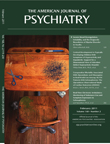Fatal Hepatotoxicity in an Elderly Patient Receiving Low-Dose Quetiapine
“Ms. B” was a 77-year-old, fragile woman who was brought to the outpatient service of the geriatric clinic with symptoms of increasing fatigue, vomiting, and loss of appetite for 1 week. The patient had recently received treatment with low-dose quetiapine (12.5 mg twice daily) for 9 days, as prescribed by her psychiatrist, for symptoms of agitation and severe insomnia. She had no family or personal history of liver disease or abnormal liver biochemistry, and results of her liver function tests, conducted in our hospital 3 weeks prior, revealed aminotransferase levels within normal limits. The patient gave no history of alcohol use, substance abuse, or smoking, and she was not receiving any medication other than quetiapine.
On examination, she was afebrile, with a temperature of 36.8°C. She had a blood pressure measurement of 94/62 mm Hg, a heart rate of 112 beats/minute, a respiratory rate of 28 breaths/minute, and an oxygen saturation rate of 96% on a 2-liter nasal cannula. The patient was not alert, and she was disoriented. Her physical examination was unremarkable otherwise. However, laboratory findings were as follows: leukocyte count, 10.300 mm3; hemoglobin level, 12.1 g/dl; hematocrit level, 37.4%; platelet count, 256.000/mm3; erythrocyte sedimentation rate, 24 mm/h; C-reactive protein level, 3 μg/dl; serum creatinine concentration, 1.43 mg/dl; blood urea nitrogen concentration, 44.63 mmol/l; sodium level, 135.1 mmol/l; potassium level, 5.14 mmol/l; aspartate aminotransferase concentration, 1,415 U/l; (reference range: 10–35 U/l); alanine aminotransferase concentration, 1,565 U/l (range: 10–35 U/l); alkaline phosphatase level, 178 U/l (range: 38–155 U/l); gamma-glutamyl transferase level, 95 U/l (range: 7–32 U/l); total bilirubin, 4.77 mg/dl; direct bilirubin, 3.38 mg/dl; albumin concentration, 3.32; prothrombin time, 56.6 seconds; international normalized ratio, 4.12; and ammonia concentration, 104 g/dl. A diagnostic evaluation for viral, autoimmune, and metabolic diseases was negative, and an abdominal ultrasound using Doppler was not remarkable.
Following this extensive work-up, the patient's acute hepatic failure was attributed to an idiosyncratic reaction to low-dose quetiapine. Therefore, quetiapine was discontinued. Although her liver function improved in the following 7 days (aspartate transaminase concentration: 942 U/l, alanine transaminase concentration: 1,020 U/l), her condition continued to deteriorate significantly despite full supportive care in the intensive care unit. “Ms. B” died on the eighth day of her stay in the intensive care unit because of overwhelming multiorgan system failure.
Footnotes
References
Information & Authors
Information
Published In
History
Authors
Funding Information
Metrics & Citations
Metrics
Citations
Export Citations
If you have the appropriate software installed, you can download article citation data to the citation manager of your choice. Simply select your manager software from the list below and click Download.
For more information or tips please see 'Downloading to a citation manager' in the Help menu.
View Options
View options
PDF/EPUB
View PDF/EPUBLogin options
Already a subscriber? Access your subscription through your login credentials or your institution for full access to this article.
Personal login Institutional Login Open Athens loginNot a subscriber?
PsychiatryOnline subscription options offer access to the DSM-5-TR® library, books, journals, CME, and patient resources. This all-in-one virtual library provides psychiatrists and mental health professionals with key resources for diagnosis, treatment, research, and professional development.
Need more help? PsychiatryOnline Customer Service may be reached by emailing [email protected] or by calling 800-368-5777 (in the U.S.) or 703-907-7322 (outside the U.S.).

